- This event has passed.
AT: Beginner Birding Virtual Class Series – Using Birding Field Guides
June 24, 2024 @ 7:00 pm - 8:00 pm
$15 – $100Virtual curriculum. Beginning Birding virtual class summer series with instructor Kristine Rivers. Classes are Monday nights at 7pm for 1 hour, and may be booked individually or as a series. Fees apply, $15 per class or $100 for series.
To register for classes visit webpage here.
- Monday, June 24, 2024: Using Your Birding Field Guide – When you’re just starting out, using your field guide to try to identify a bird in the field can be difficult! We’ll help you narrow down where to look in your field guide, and talk about different identification methods using size and shape, behavior and habitat clues. Then you’ll have a chance to practice your identification skills, so be sure to have your favorite field guide handy!
- Monday, July 1, 2024: Location, Location, Location! Understanding Habitat – Birds are an amazingly diverse group of animals with over 10,000 species worldwide, because they have adapted over time to survive in almost every type of habitat. We’ll take a close look at the many different habitat types in our area, and the kinds of birds that each attracts.
- Monday, July 8: Bird’s Eye View on Behavior – Fascinated with bird behavior? So are we! Join us for this special presentation using our personal videos of a variety of birds in action to learn how you can use behavior to help with identification.
- Monday, July 15: It’s Time for a Makeover! Understanding Plumage Variation – In this interactive presentation, we’ll discuss the reasons for plumage variations; how molting can affect identification; and color changes of bills, lores, legs, and feet. Bring your favorite field guide to practice your identification skills!
- Monday, July 22, 2024: Rat-a-tat-tat! Who’s That? Nature’s Drummers – Woodpeckers are fascinating birds with amazing physiological adaptations and behavioral habits. We’ll discuss how their anatomical structure protects them from injury, then take a closer look at species that are common along the Upper Texas Coast.
Log in VMS under AT: Skills Enhancement Courses


